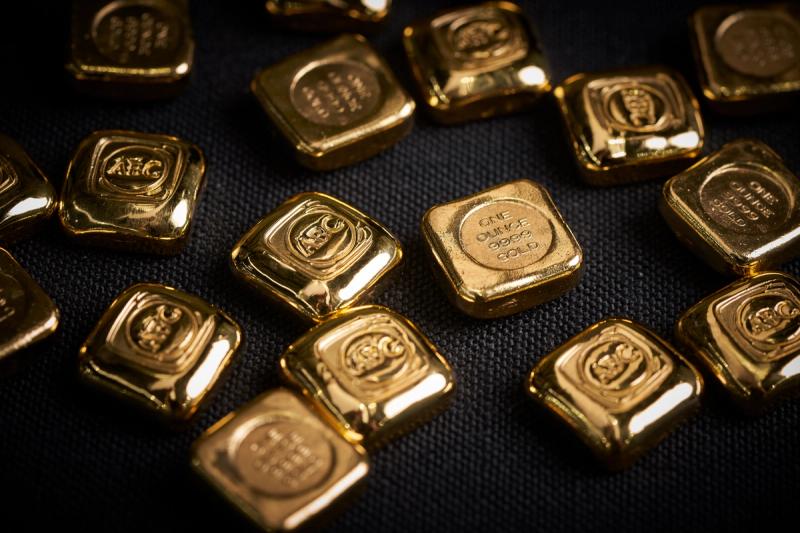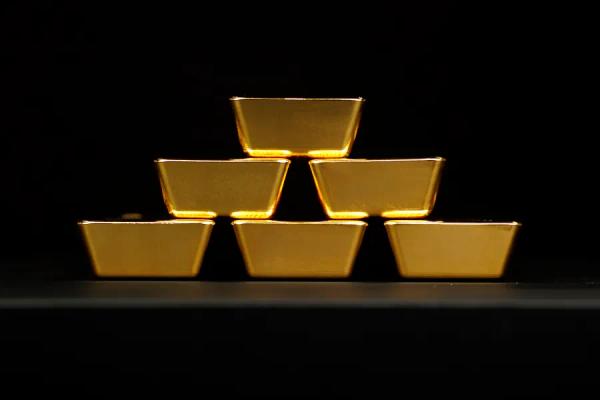When investing in gold or silver, purity matters. It affects the value, credibility, and resale potential of your bullion — yet many first-time buyers don't fully understand what those numbers and stamps actually mean.
This guide explains precious metal purity standards, what certifications to look for, and how to ensure your investment meets recognized quality benchmarks.


What Is Bullion Purity?
Bullion purity refers to how much of a bar, coin, or round consists of the actual precious metal versus other metals or trace elements. Purity is typically expressed as either:
- A decimal — such as .9999 or .999
- A percentage — such as 99.99% or 99.9%
- Karats (for gold only) — such as 24 karat
The higher the number, the purer the metal.
For example:
- .9999 means 99.99% pure gold or silver
- .999 means 99.9% pure
- .9167 means 91.67% pure (common in some gold coins like Krugerrands)
Understanding these measurements helps you compare products and verify you're getting what you pay for.
Investment-Grade Purity Standards
Different precious metals have established industry standards for investment-grade bullion:
Gold Purity Standards
Standard for bars and most coins: .9999 (99.99% pure)
- Also called "four nines fine" or 24 karat
- The global benchmark for investment bullion
- Used by major mints and refineries worldwide
Common alternative: .999 (99.9% pure)
- Also called "three nines fine"
- Still considered investment-grade
- Less common than .9999 for gold
Historical standard: .9167 (91.67% pure / 22 karat)
- Used in coins like the Krugerrand, Sovereign, and American Eagle
- Contains copper for durability
- Still widely accepted due to sovereign backing
- The total gold content is guaranteed, with the balance being alloy metals
All formats are legitimate — the key is that purity is clearly marked and verifiable.
Silver Purity Standards
Standard for investment bullion: .999 (99.9% pure)
- The universal benchmark for silver bars and coins
- Also called "three nines fine"
- Sometimes referred to as "fine silver"
Higher purity: .9999 (99.99% pure)
- Less common but available
- Offers no practical advantage for investment purposes
- May carry slightly higher premiums
Lower purity (not investment-grade): .925 (Sterling silver)
- Used in jewelry and decorative items
- Contains 7.5% copper for strength
- Not considered bullion for investment purposes
For investment purposes, always look for .999 or higher in silver products.
Platinum and Palladium Standards
Standard for both metals: .9995 (99.95% pure)
- Industry benchmark for investment bars and coins
- Stricter than gold or silver due to industrial applications
Why Purity Matters
Understanding and verifying purity is important for several reasons:
1. Market Value
Bullion is traded based on its pure metal content. A .9999 gold bar contains more pure gold per gram than a .999 bar of the same weight, making it marginally more valuable.
When you sell bullion, dealers calculate value based on:
- Pure metal weight (total weight × purity)
- Current spot price for that metal
- Any applicable dealer margin
Higher purity means higher pure metal content.
2. Trust and Resale
Investment-grade purity standards (.9999 for gold, .999 for silver) are universally recognized. Products meeting these standards:
- Trade more easily in global markets
- Require less authentication when selling
- Are accepted by reputable dealers worldwide
- Qualify for professional vault storage
- Meet requirements for certain investment accounts
Lower purity products may face more scrutiny or lower buyback prices.
3. Storage and Insurance
Professional vault services and insurance providers often specify minimum purity requirements. Investment-grade standards ensure your bullion:
- Qualifies for secure storage facilities
- Meets insurance policy requirements
- Can be easily valued for coverage purposes
4. GST Treatment (New Zealand)
In New Zealand, bullion must meet specific purity thresholds to be zero-rated for GST:
- Gold: Minimum 99.5% pure (.995)
- Silver: Minimum 99.9% pure (.999)
- Must be in bar, ingot, or wafer form
Products below these thresholds may incur GST charges.
What Is a Bullion Certification?
A certification — often called an "assay" or "certificate of authenticity" — is documentation or packaging that confirms the weight, purity, and authenticity of your bullion.
Types of Certification
1. Stamped Markings (on the product itself)
All quality bullion includes stamps or engravings showing:
- Purity (e.g., .9999 FINE GOLD)
- Weight (e.g., 1 OZ or 31.1g)
- Manufacturer/mint mark (e.g., NZ MINT)
- Serial number (on most bars)
These markings are permanent and travel with the product.
2. Assay Certificates (separate documentation)
Many bars come sealed in protective packaging with an assay card or certificate stating:
- Weight and purity
- Serial number (matching the bar)
- Manufacturer details
- Sometimes refiner registration numbers
- Signature or stamp of assay verification
3. Tamper-Evident Packaging
High-quality bars often come in:
- Sealed plastic cases or capsules
- CertiCard™ packaging (for smaller bars)
- Plastic sleeves with printed certificates
- Security-sealed boxes
This packaging protects the product and provides visual evidence if tampering has occurred.
How Purity Is Verified
Reputable mints and refineries use several testing methods to ensure purity:
Fire Assay
The traditional gold standard for purity testing:
- A sample is heated to extreme temperatures
- Impurities are separated from pure metal
- Remaining metal is weighed to calculate purity
- Extremely accurate (to .0001)
- Used for certification of high-value products
X-Ray Fluorescence (XRF)
Modern non-destructive testing:
- X-rays analyze the elemental composition
- Surface-level reading (doesn't require cutting)
- Fast and accurate for verification
- Used by dealers and mints for authentication
- Can detect plating or counterfeits
Ultrasonic Testing
Measures metal density:
- Sound waves pass through the metal
- Density is compared to known standards
- Detects internal inconsistencies
- Non-destructive testing method
Weight and Dimension Verification
Simple but effective:
- Precise scales measure exact weight
- Calipers measure dimensions
- Compared to manufacturer specifications
- Helps identify counterfeits or incorrect products
At New Zealand Mint, we use professional testing equipment to verify all products before sale and can test bullion brought to us for verification.
Verifying Authenticity: What You Can Do
Before Purchase:
✓ Buy from reputable sources — Established mints and dealers guarantee authenticity
✓ Request documentation — Certificates and specifications should be readily available
✓ Check serial numbers — Verify they match between product and certificate
✓ Examine packaging — Look for professional, tamper-evident sealing
✓ Ask about testing — Reputable sellers can demonstrate how they verify products
After Purchase:
✓ Keep all documentation — Store certificates separately from physical bullion
✓ Record serial numbers — Photograph or log serial numbers for insurance
✓ Maintain original packaging — Sealed packaging supports authentication during resale
✓ Professional testing — Consider third-party verification for high-value items or inherited bullion
New Zealand Mint's Quality Standards
At New Zealand Mint, we maintain strict purity and certification standards:
Our Gold Products:
- Refined to .9999 (99.99%) purity
- Meets London Bullion Market Association (LBMA) standards
- Each bar individually stamped with purity, weight, and mint mark
- Serial numbered for traceability
- Sealed in protective packaging
- Accompanied by assay documentation
Our Silver Products:
- Refined to .999 (99.9%) purity
- Exceeds New Zealand GST zero-rating requirements
- Clearly marked with weight, purity, and origin
- Secure packaging for bars
- Capsules or protective covers for coins and rounds
Testing and Verification:
- XRF analysis equipment on-site
- Precision scales calibrated regularly
- Visual inspection of all products
- Third-party testing service available for customer bullion
Documentation:
- Assay certificates provided with bars
- Clear product specifications on all listings
- Detailed invoices for your records
- Transparent pricing showing purity basis
Industry Standards and Accreditations
Several organizations set and maintain global bullion standards:
LBMA (London Bullion Market Association)
- Sets international standards for gold and silver trading
- Maintains list of approved refiners
- Ensures consistent quality across global markets
COMEX (Commodity Exchange)
- U.S.-based exchange with strict delivery standards
- Specifies purity, weight, and form requirements
- Influences global pricing and quality benchmarks
LPPM (London Platinum and Palladium Market)
- Maintains standards for platinum-group metals
- Accredits refiners and manufacturers
ISO Standards
- ISO 9001: Quality management systems
- ISO/IEC 17025: Testing and calibration laboratory competence
Products from accredited facilities meet internationally recognized quality standards.
Special Considerations for Different Products
Collectible vs. Bullion Coins
Bullion coins are valued for metal content:
- Standard purity markings
- Year and design may vary
- Priced close to spot + small premium
- Investment focus
Collectible/numismatic coins have additional value factors:
- Rarity, condition, historical significance
- May be proof quality (higher polish/detail)
- Often in special packaging
- Priced above bullion value
Both can be investment-grade purity, but pricing differs.
Cast vs. Minted Bars
Cast bars:
- Molten metal poured into molds
- Slight surface irregularities normal
- Lower premiums
- Fully acceptable quality
Minted bars:
- Stamped or pressed from refined sheets
- Smoother finish and sharper details
- Slightly higher premiums
- Preferred by some collectors
Both meet the same purity standards.
Rounds vs. Coins
Rounds (private mint):
- Not legal tender
- Same purity as coins
- Often creative designs
- Lower premiums
Coins (government mint):
- Legal tender status
- Government-guaranteed purity
- Standardized designs
- Higher premiums
Purity standards are equivalent — the difference is issuing authority.
If You Have Questions About Purity
New Zealand Mint offers:
Product Information:
- Detailed specifications on all product pages
- Clear purity statements
- Certificate images where applicable
- Transparent sourcing information
Testing Services:
- XRF analysis for customer-owned bullion
- Weight and dimension verification
- Authentication support
- Written test results available
Expert Guidance:
- Staff trained in bullion standards
- Assistance interpreting markings
- Help identifying products
- Recommendations based on your needs
We're here to ensure you understand exactly what you're buying and can verify quality at any time.
Key Takeaways
✓ Investment-grade purity is .9999 for gold, .999 for silver
✓ All quality bullion is clearly marked with purity, weight, and manufacturer
✓ Certifications and packaging provide additional authentication
✓ Buy from reputable sources to ensure genuine products
✓ Keep documentation to support resale and insurance
✓ Verification is available through dealers and testing services
Understanding purity standards protects your investment and ensures you receive full value for your purchase.
Ready to Invest with Confidence?
Browse our range of investment-grade gold and silver bullion, all meeting the highest purity standards. Every product page includes detailed specifications, current pricing, and certification information.
Important Information
This article is for educational and informational purposes only and does not constitute financial, investment, or tax advice.
Before making any investment decision, consider seeking independent advice from a licensed financial professional who can assess your personal circumstances and goals.
New Zealand Mint provides information and products but does not provide financial advice.
